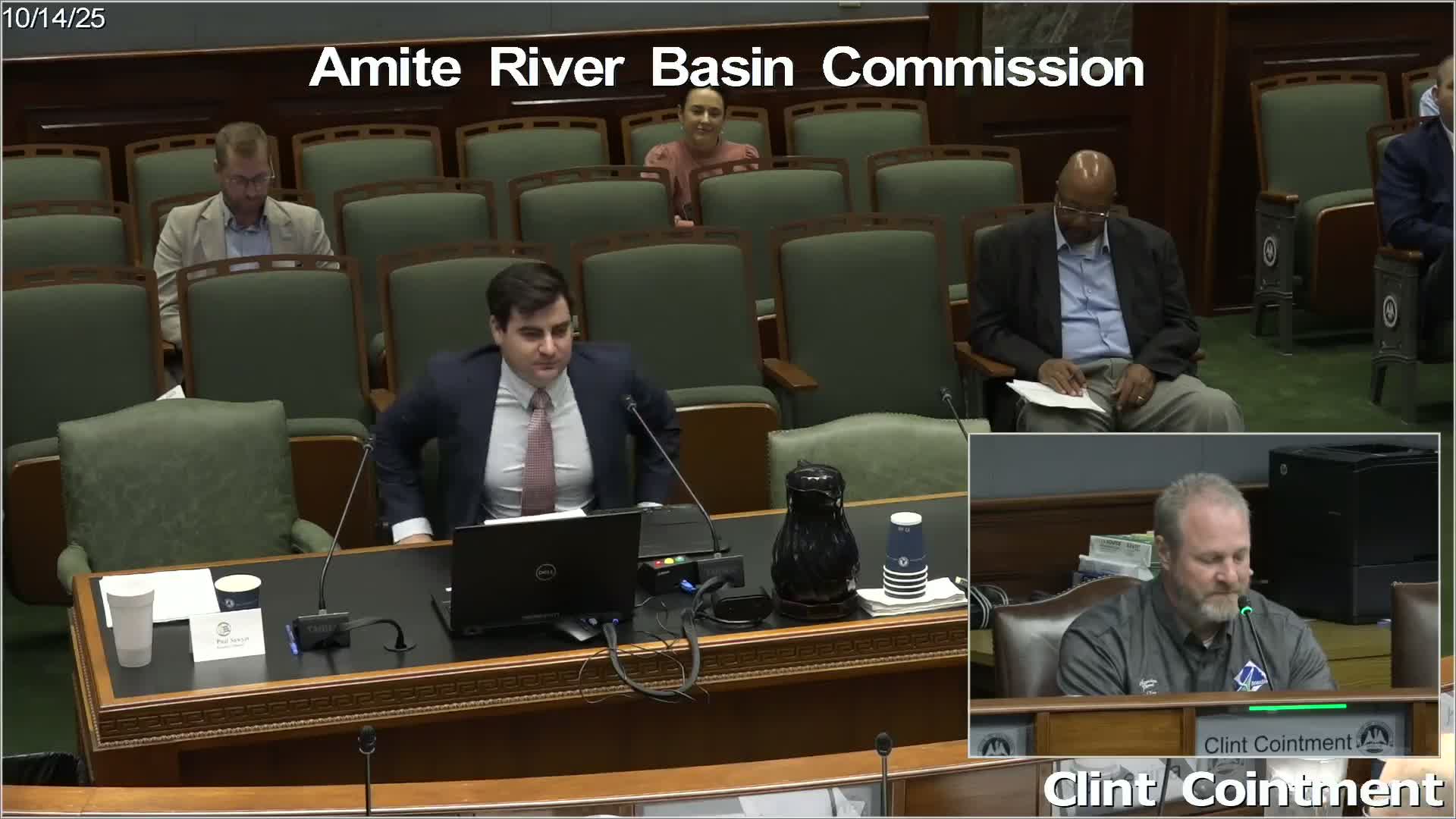Lake Pontchartrain restoration team seeks local input on updated conservation plan
October 14, 2025 | 2025 Legislature LA, Louisiana
This article was created by AI summarizing key points discussed. AI makes mistakes, so for full details and context, please refer to the video of the full meeting. Please report any errors so we can fix them. Report an error »

Consultants updating the Lake Pontchartrain Basin Restoration Program’s Comprehensive Conservation Management Plan (CCMP) briefed the Amite River Basin Commission on Oct. 15 and asked for local feedback ahead of formal public comment and EPA review.
Keesler Morrison of Emergent Method, part of the consultant team, described the CCMP as a blueprint that prioritizes projects and actions for funding and implementation. The update reframes the program’s priorities into three themes — water quality, habitat and education/involvement — and the team has drafted about 72 actions mapped to those themes. ‘‘We are still accepting feedback. There’s still room for improvement, room to add, room to adjust,’’ Morrison said.
Why it matters: Federal funding for the basin has increased under recent legislation, and the updated CCMP will guide how available EPA funds and other resources are prioritized over the next several years.
Morrison emphasized that the Lake Pontchartrain program’s purpose does not include flood‑control projects: its focus is ecological restoration, water‑quality improvement and public education. The team reported that many information sources and prior plans informed the update, including local master plans and academic studies. The draft includes an issues report, monitoring strategies, a climate‑vulnerability assessment and appendices that document data and outreach.
Morrison said the only item delaying submission of the draft to EPA is a comprehensive round of public outreach. The consultant team plans community roundtables across the basin (Reserve, St. John/Amite area, Slidell and Violet/Dockside Farms), and a webinar noon–1 p.m. on Oct. 21. Morrison asked ARBC members to share outreach notices with their networks and to participate in the roundtables.
During Q&A, a commissioner raised concerns about heavy‑metal contamination reportedly linked to an alumina facility. Morrison said available academic work and monitoring data have been considered in the issue report and the draft actions; he suggested EPA and other agencies may be engaged where regulatory or remediation authority exists.
Ending: The consultant team will begin public outreach next week, collect feedback, then present a revised draft to the program’s executive committee and EPA. ARBC staff and commissioners volunteered to spread word of the roundtables and webinar to encourage participation.
Keesler Morrison of Emergent Method, part of the consultant team, described the CCMP as a blueprint that prioritizes projects and actions for funding and implementation. The update reframes the program’s priorities into three themes — water quality, habitat and education/involvement — and the team has drafted about 72 actions mapped to those themes. ‘‘We are still accepting feedback. There’s still room for improvement, room to add, room to adjust,’’ Morrison said.
Why it matters: Federal funding for the basin has increased under recent legislation, and the updated CCMP will guide how available EPA funds and other resources are prioritized over the next several years.
Morrison emphasized that the Lake Pontchartrain program’s purpose does not include flood‑control projects: its focus is ecological restoration, water‑quality improvement and public education. The team reported that many information sources and prior plans informed the update, including local master plans and academic studies. The draft includes an issues report, monitoring strategies, a climate‑vulnerability assessment and appendices that document data and outreach.
Morrison said the only item delaying submission of the draft to EPA is a comprehensive round of public outreach. The consultant team plans community roundtables across the basin (Reserve, St. John/Amite area, Slidell and Violet/Dockside Farms), and a webinar noon–1 p.m. on Oct. 21. Morrison asked ARBC members to share outreach notices with their networks and to participate in the roundtables.
During Q&A, a commissioner raised concerns about heavy‑metal contamination reportedly linked to an alumina facility. Morrison said available academic work and monitoring data have been considered in the issue report and the draft actions; he suggested EPA and other agencies may be engaged where regulatory or remediation authority exists.
Ending: The consultant team will begin public outreach next week, collect feedback, then present a revised draft to the program’s executive committee and EPA. ARBC staff and commissioners volunteered to spread word of the roundtables and webinar to encourage participation.
Don't Miss a Word: See the Full Meeting!
Go beyond summaries. Unlock every video, transcript, and key insight with a Founder Membership.
✓
Get instant access to full meeting videos
✓
Search and clip any phrase from complete transcripts
✓
Receive AI-powered summaries & custom alerts
✓
Enjoy lifetime, unrestricted access to government data
30-day money-back guarantee

